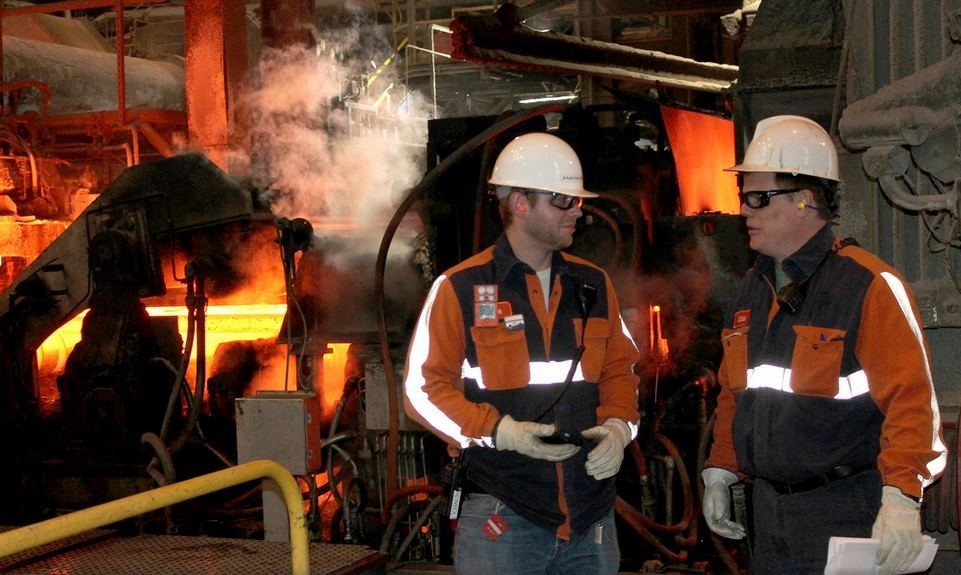IBM Watson will help protect workers in metallurgical plants

One of the largest manufacturers of rolled steel in the world, North Star Blue Scope Steel, will use cognitive technologies in production. This is about our technology Watson Internet of Things (IoT). The company will use this IBM service in conjunction with wearable devices. The goal is to protect our employees in the conditions of extreme heat and difficult physical work. Each employee is planned to provide his own wearable device, which will transmit the collected data to the center. And here the cognitive service will process this data, highlighting the most dangerous areas.
When working at a metallurgical plant, workers are exposed to a large number of hazards and risks, including elevated temperatures, toxic gases, open fires and industrial equipment. According to statistics, a year in the United States it takes about $ 25 billion to pay for the compensation package for American workers. This is about compensation for physical overloads and falls. In the United States, about 150 workers are injured at the plant every 15 seconds. The overwhelming majority of enterprises still use systems for checking the requirements of security and personal protection, developed in the middle of the 20th century. All this leads to an increased number of accidents at work. In 2014, about 3 million non-fatal injuries were recorded at the enterprises of the metallurgical complex in the United States.
According to Harriet Green, the head of IBM Watson IoT in the areas of commerce and education, now we need to use modern methods to protect employees in the enterprise. In particular, smart wearable devices and cognitive systems. This set of tools allows organizations to reduce the number of emergencies in enterprises. The Internet of Things helps in this. Information from individual devices of employees is processed together with data on weather conditions, atmospheric phenomena in the region, etc. As a result, employees feel better, less likely to harm their health.
')

In emergency situations, the system will signal the incident or warn about the problem even before its occurrence (for example, the vital signs of some employee have dramatically gone beyond the norm). IBM’s cognitive system will process, analyze, and classify data that comes from individual devices. As an example, we can take a situation where the system shows an employee of the labor protection department a list of employees whose vital signs are not in order. It can be body temperature, rapid pulse, immobility for several minutes. Separately, these data may not be a problem, but in the complex they already indicate an incident.
Gabi Zodik, director of IoT and Mobile Platforms of IBM Research, believes that most of the problematic situations in production can be prevented by using reliable protective equipment and services that will monitor employee activity in real time. In a dangerous situation, the system will give an early warning, which will, if not prevent an accident or accident, then significantly reduce the negative consequences of such an accident.

Now our company offers IBM Employee Wellness and Safety Solution . It is a collection of tools that collect and process data from various smart devices. These devices track the pulse, galvanic skin reflex, the body temperature of employees, their overall level of activity. All these data are verified with information about the air temperature at the enterprise and the level of humidity. Recommendations service provides individual, so that each employee can be given personal recommendations on certain situations. These sensors can be used to collect data on the level of radioactive radiation, noise, vibration and other information.
Now the technology is undergoing a pilot stage at one of the enterprises of North Star Blue Scope Steel. After the initial stage is completed, the IBM Employee Wellness and Safety Solution tool will work on all production sites of the company with work conditions close to extreme.
Source: https://habr.com/ru/post/372573/
All Articles